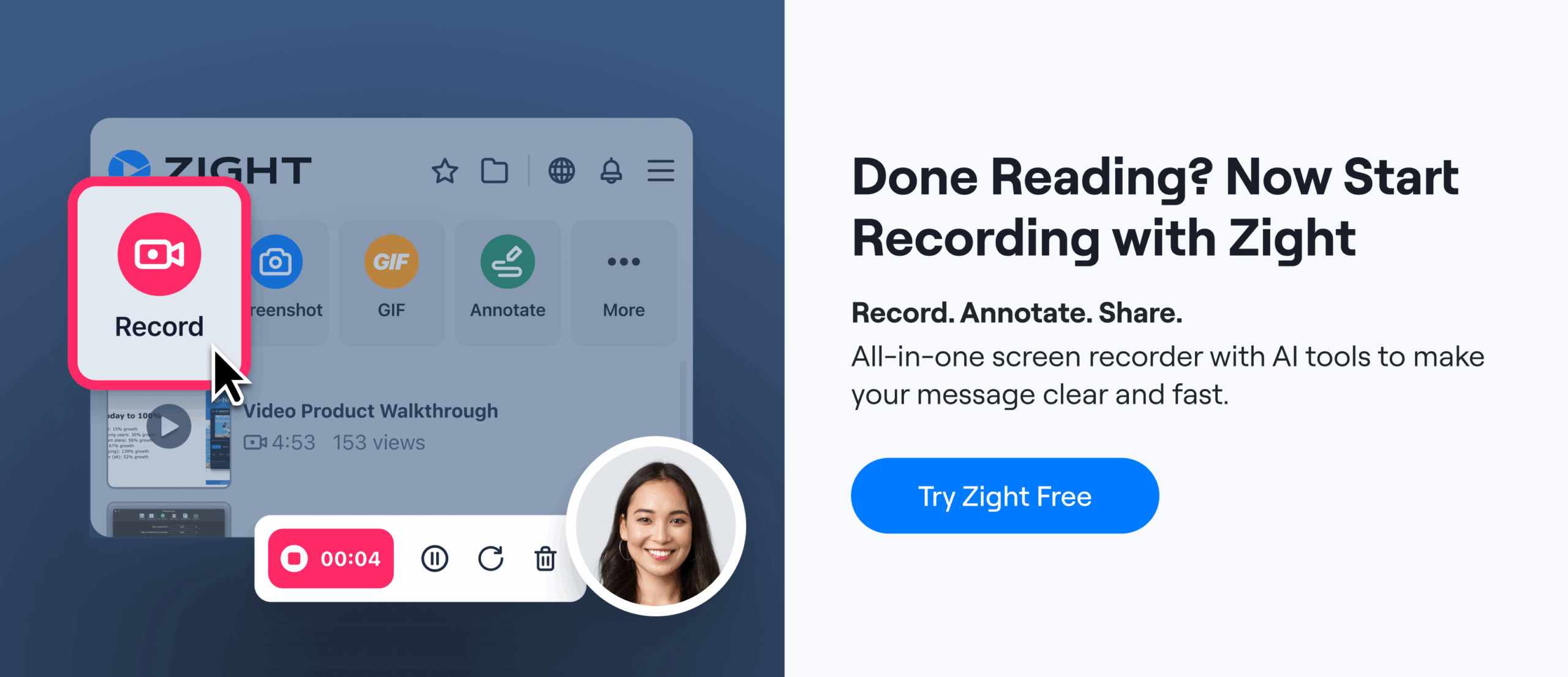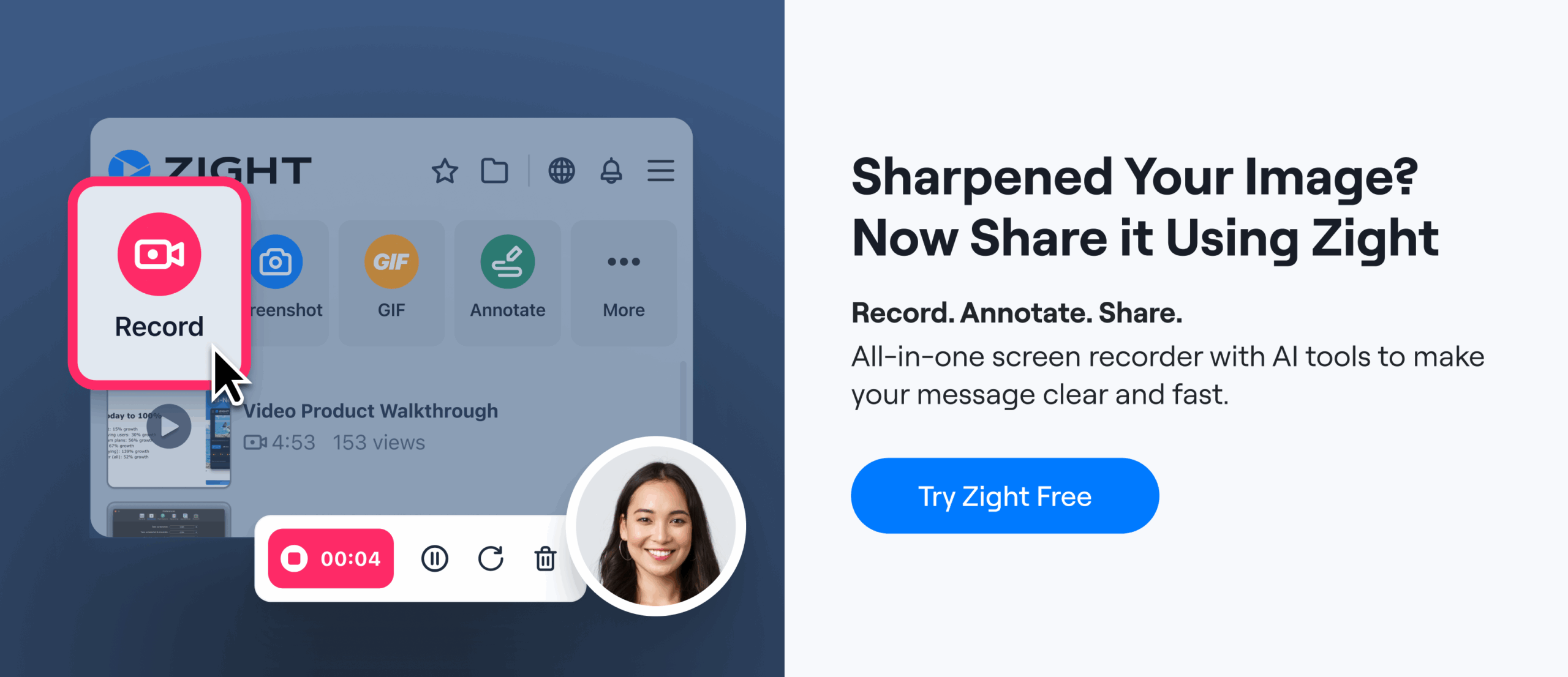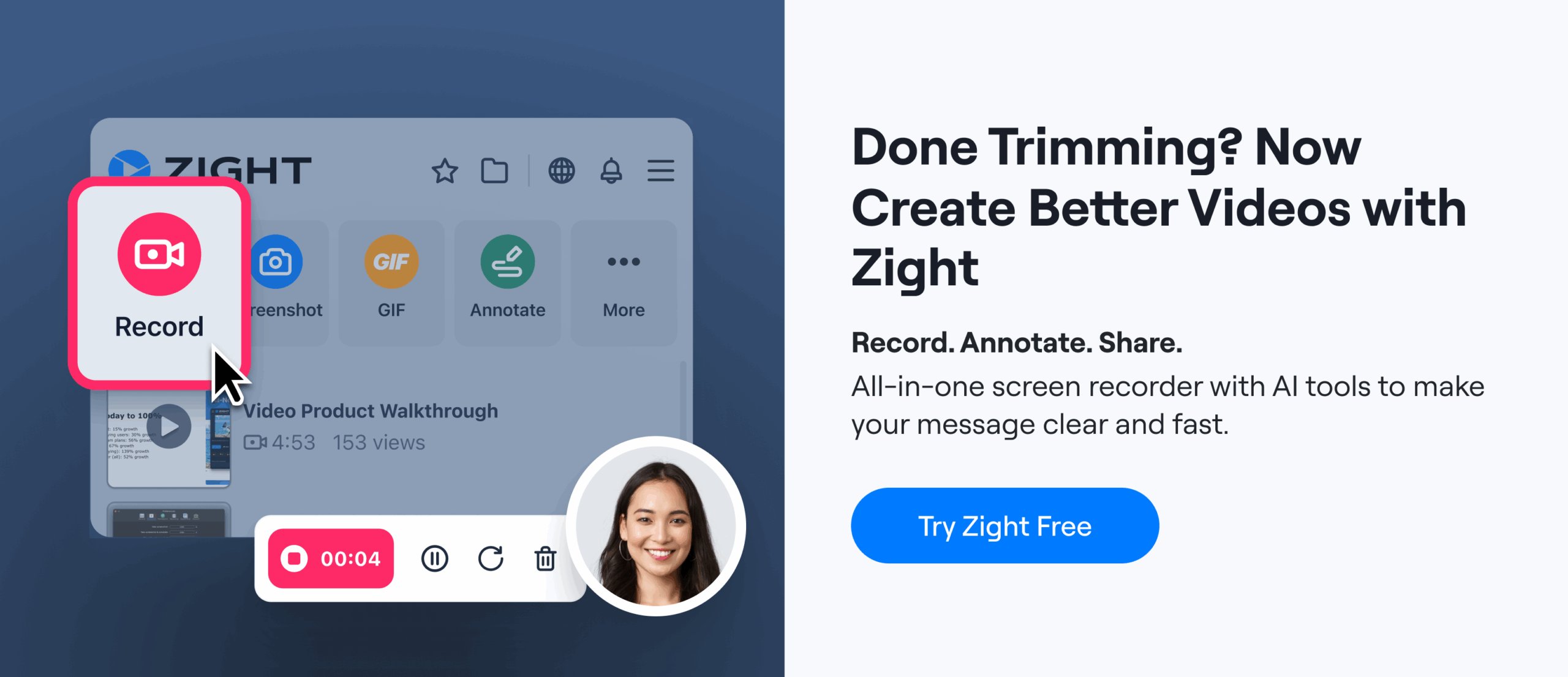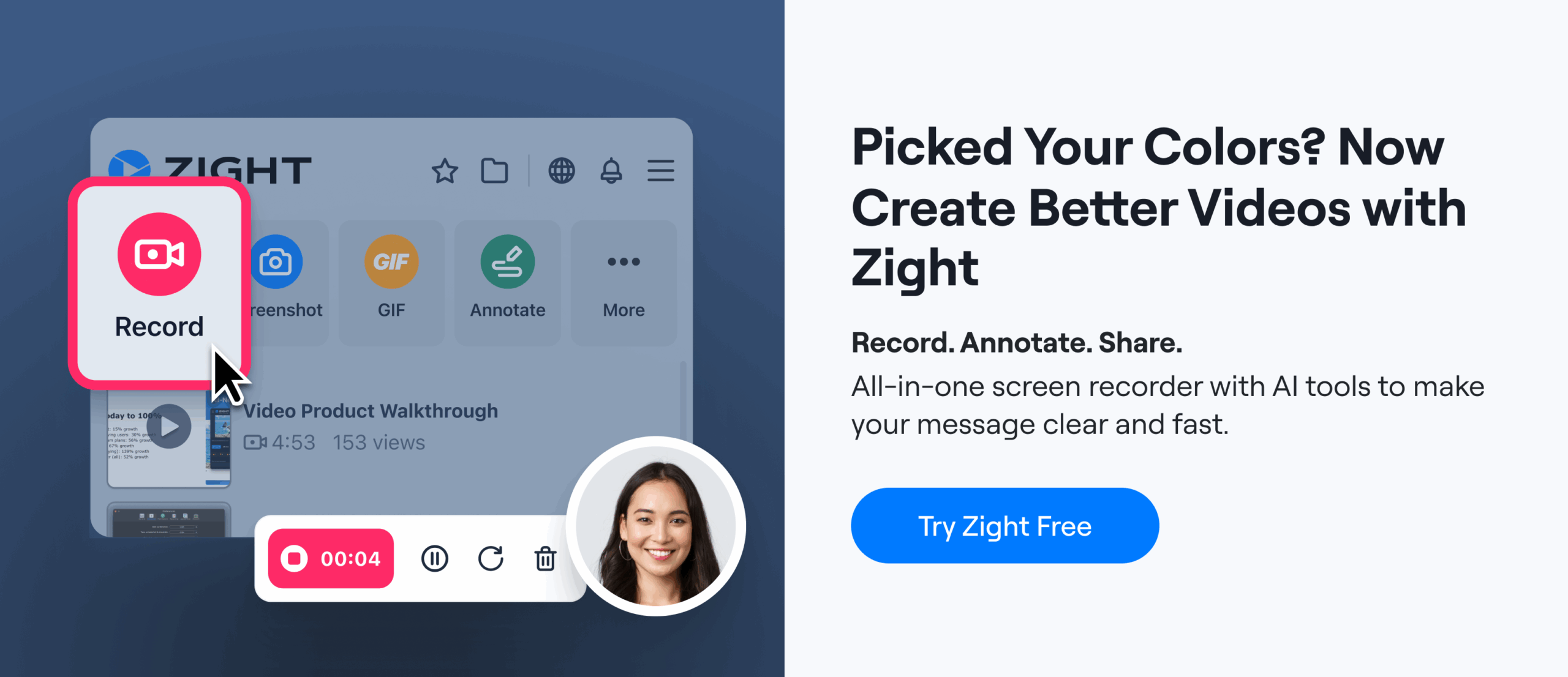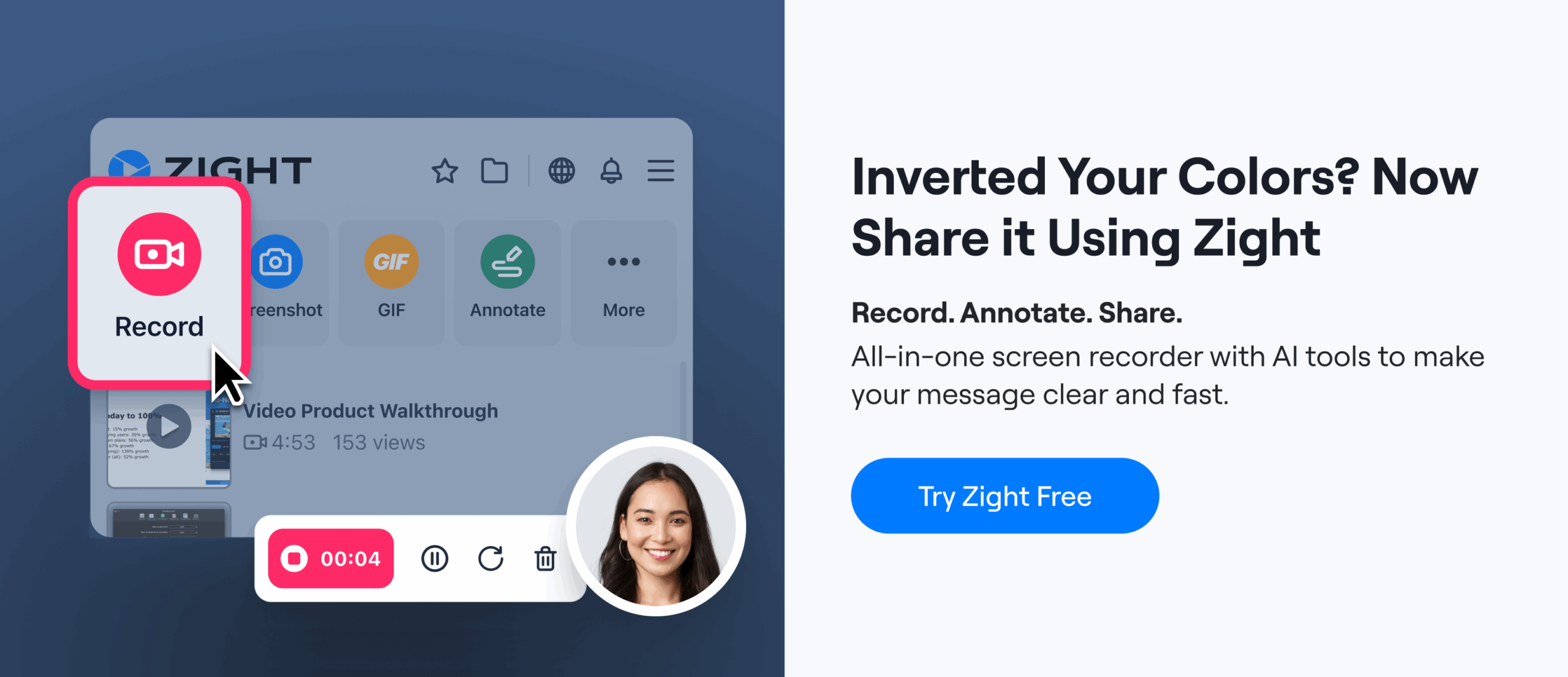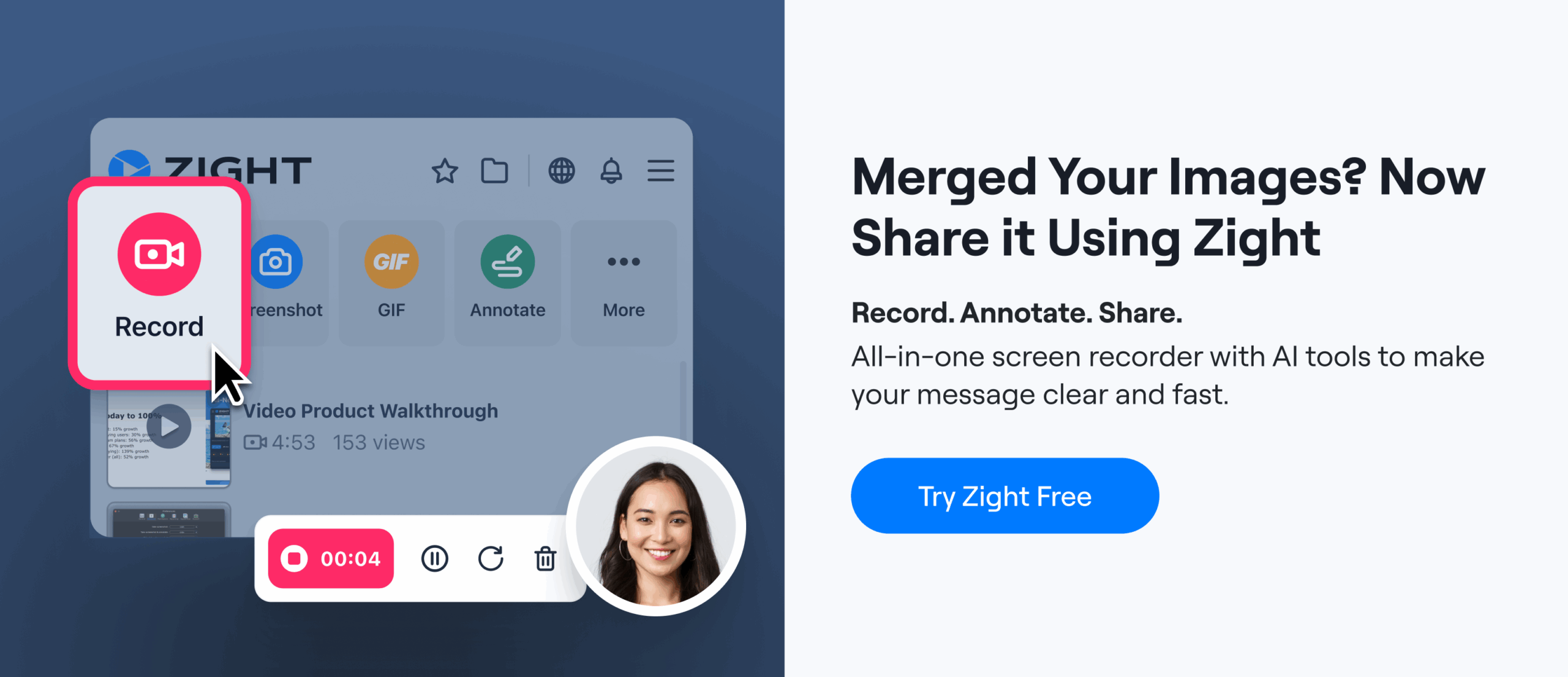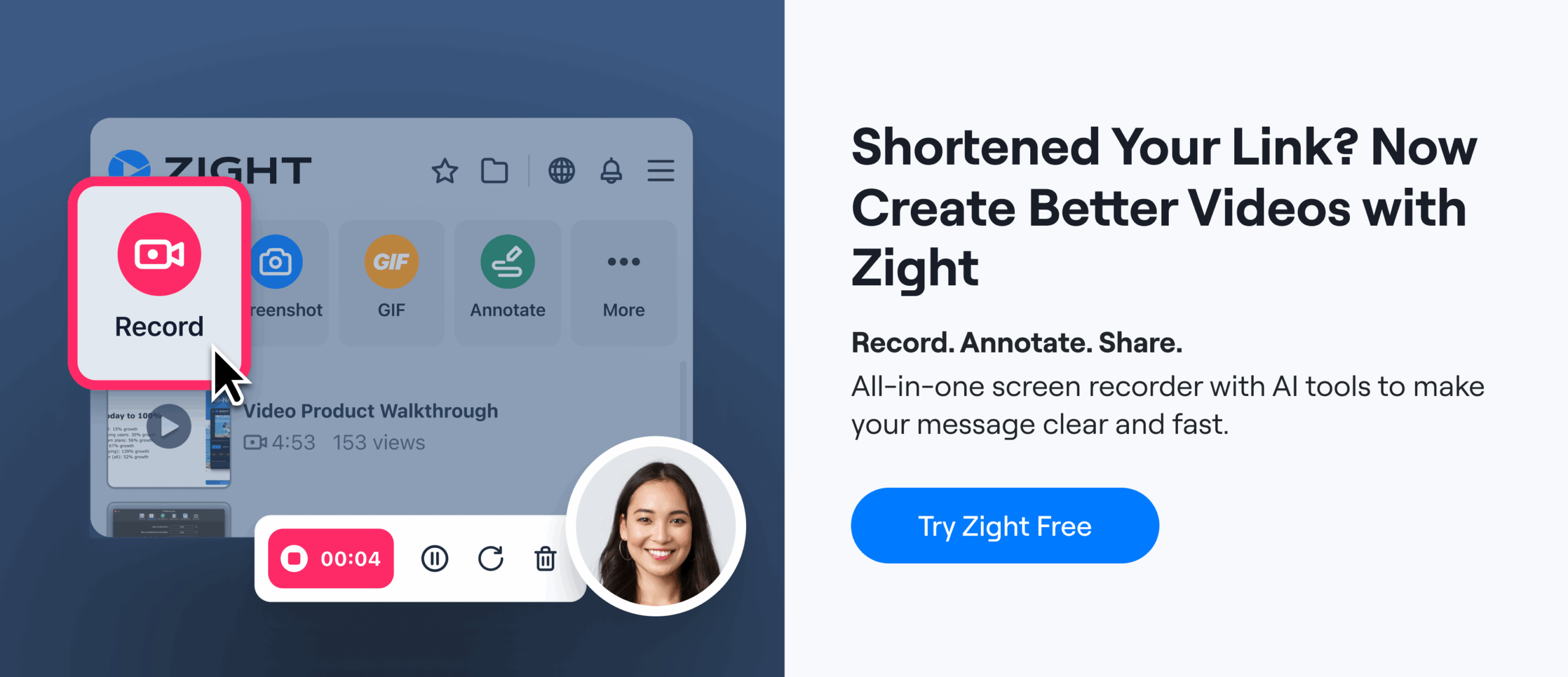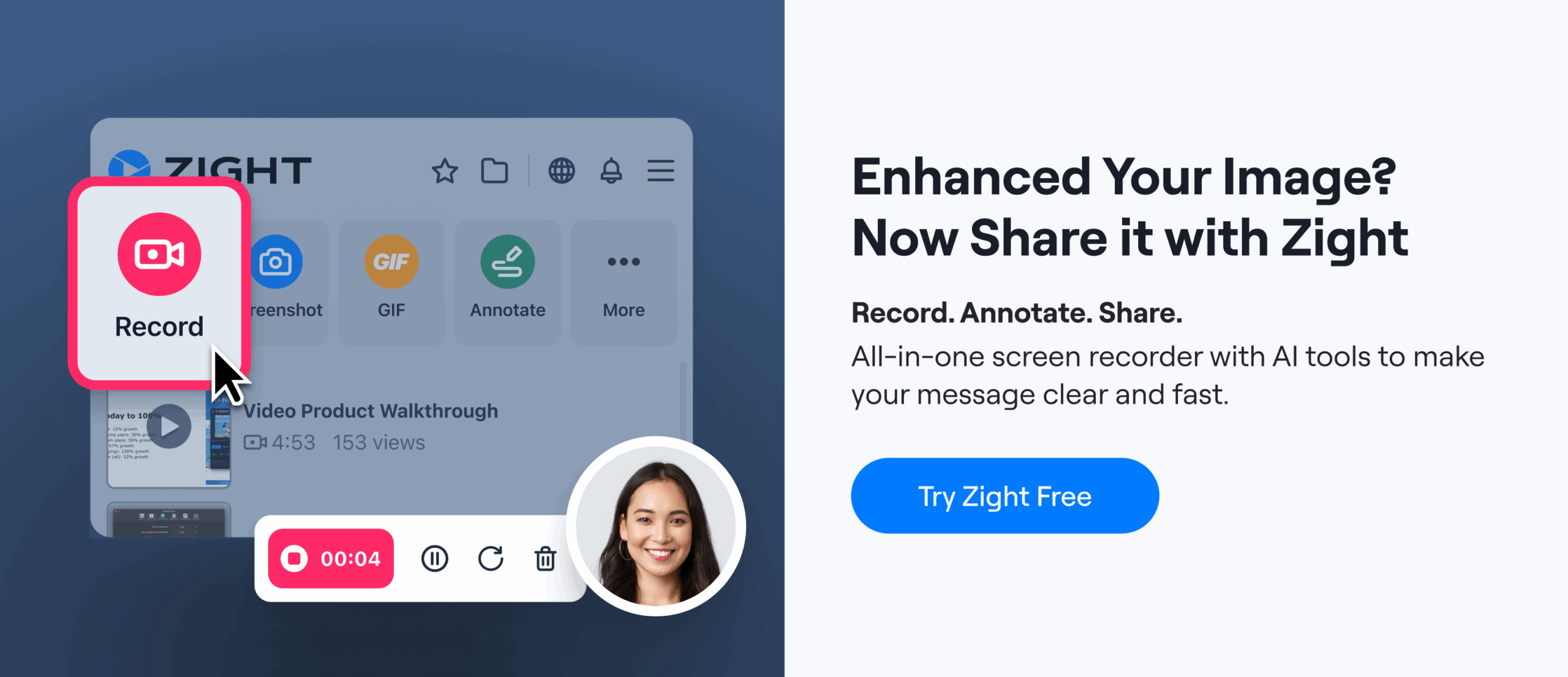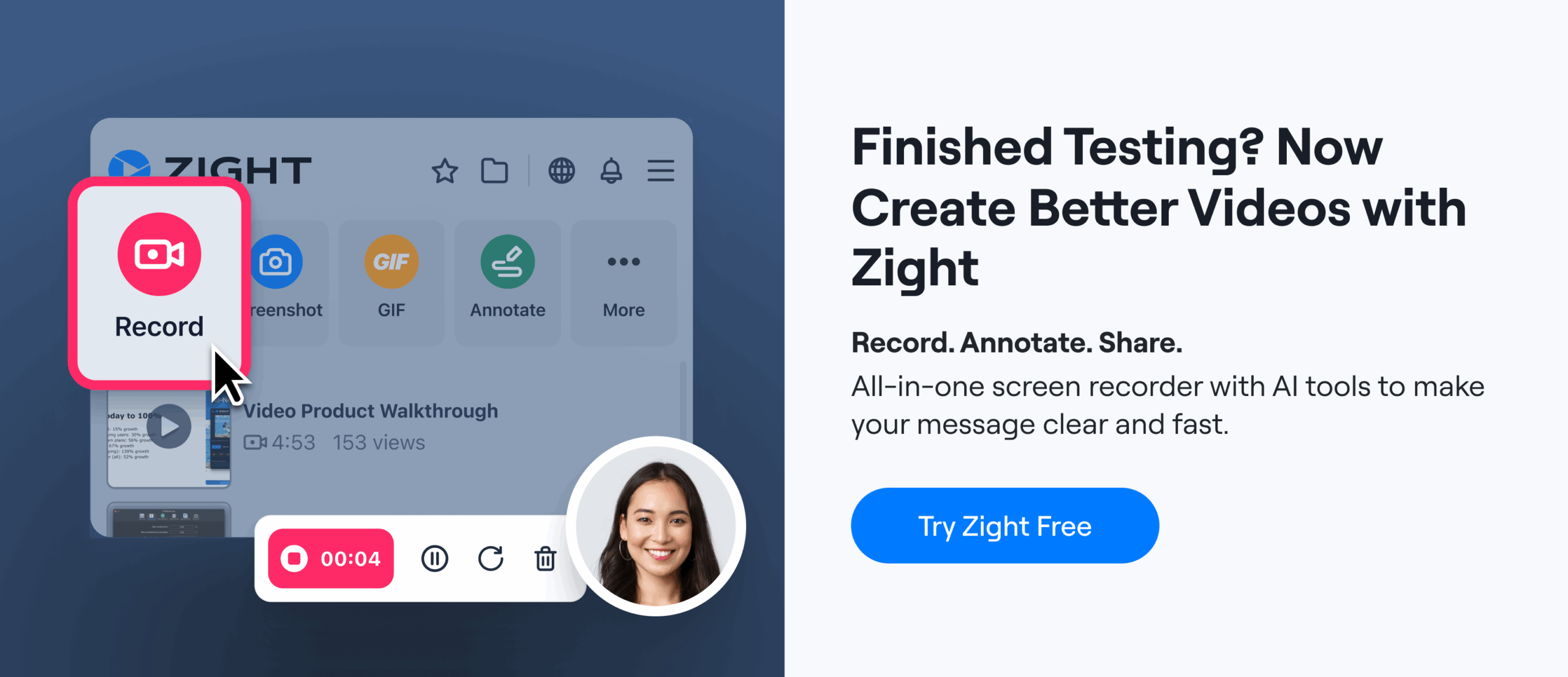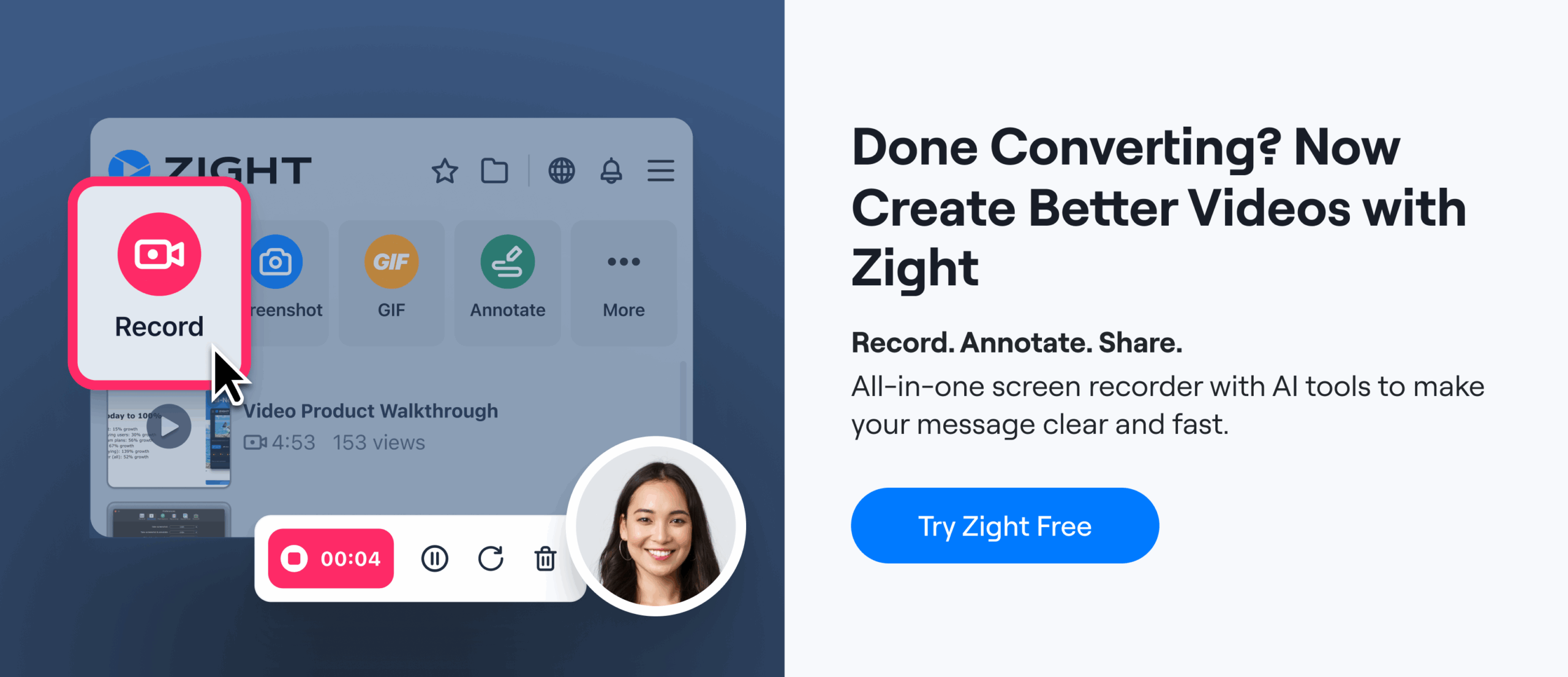Who doesn’t enjoy a captivating story? That’s likely why case study videos have become so popular. They’re more than just stories as they offer a deep dive into real-world scenarios, featuring genuine people and authentic businesses. Through these videos, companies showcase the real impact of their products and services, whether it’s through documenting product development, cultural shifts, or community impact.
To bring these stories to life, tools like Zight can be incredibly useful. With Zight’s features like screen recording, GIF creation, and easy file sharing, you can capture every moment and detail seamlessly. Imagine using Zight to record a customer’s success journey or create engaging visuals to complement your narrative. It’s all about making your case study videos as compelling and impactful as possible.
The question is, what does a good case study video look like? Our guide below will cover every aspect of case study videos, from their purpose, creating compelling videos, exploring what makes them successful, and sharing practical case study video examples and tips to help you craft impactful case study videos that resonate and drive results. Let’s get into it.
What is a Case Study Video?
A case study video is a type of video content that demonstrates how other people are successfully using and benefiting from a product. It focuses on real customer success stories to show the value of a company’s products or services. In a crowded market of claims and promises, these videos serve as credible proof that your business delivers on its promises.
The strength of a case study video comes from its relatability. When potential customers see themselves in your stories, it fosters a true connection. Seeing real people handle challenges makes your business appear more trustworthy and your solutions more appealing. After all, who could offer a more credible opinion to potential customers than someone who’s experienced your services firsthand?
How is a Video Case Study Different From a Written Case Study?
Both written and video case studies aim to convert customers, but video case studies have several specific advantages:
- More Persuasive: While written case studies require readers to interpret the message, video case studies present it directly from the customer, making the impact more immediate and convincing.
- More Engaging: Videos captivate with dynamic visuals, vibrant colors, and sound, making them far more engaging than dense blocks of text. Who wouldn’t prefer a lively video over a long read?
- Higher Conversion Rates: Video marketing campaigns are very effective. It’s not surprising, given how seamlessly videos can be optimized for mobile devices—something text-heavy content struggles with.
Types of Case Study Videos
Like in any film or video genre, you’ll notice certain styles and tones that recur frequently. This is also true for case study videos, where you’ll come across several common types as you explore case study videos.
That said, there are different types of case study videos that your business can produce, with different levels of complexity. Each type of case study video has a specific customer problem and appeals to different aspects of your audience’s decision-making process. Depending on your objectives and the topic, choosing the right style of case study video can effectively communicate the message you want to share.
1. Customer Testimonials
This type of video is quite simple to make and is one of the easiest case study videos to make. In customer testimonial videos, you interview your happy customers about their experience with your business and its impact on their lives. Since it involves just a straightforward interview with the customer, you only need one filming location and minimal editing to create the video.
Product or service review case study videos provide a thorough look at your offering’s features, functionality, and benefits. They offer an objective assessment and serve as valuable resources for new customers.
Target Audience: These videos target potential customers who are researching your product or service and need detailed information to make an informed decision.
Testimonial Video Example:
This video is a standout example of customer testimonials. Instead of simply listing features, the interviews highlight the challenges the company faced and how Zoom provided effective solutions. The video’s concise length keeps viewers engaged while still delivering a complete and compelling story in one location.
2. Customer Reviews
Customer reviews are authentic insights that highlight a product’s real-world performance. Much like a customer testimonial video, a customer review video features a happy customer discussing your product or service. However, there’s a key difference: in a customer review video, the customer focuses more on the specific features of the product or service, rather than just the value it provided them.
Depending on your approach, such videos may include footage of the customer using your product on camera. Generally, most case study video testimonials follow a Q&A style of storytelling.
Creating a customer review video is straightforward. The interview portion requires just one shoot location and minimal editing. If you decide to add footage of the product in action, the shoot and editing process will be more complex.
Target Audience: These videos are aimed at potential customers who are actively researching your product or service. They provide detailed information to help them make an informed purchase decision.
Customer Reviews Case Study Video Example:
This customer review case study video features Lana Blakely who explains how Notion has transformed her personal and professional life. She breaks down specific features like databases, templates, and task management tools, showing real-life examples of how she uses the app to stay organized. The video includes screen recordings of how she navigates the Notion workspace, providing viewers with a visual understanding of how the platform functions. Any potential customer actively looking for Notion will find information about the tool and can be able to make an informed decision.
3. Case Study Narrative
This is the most complex type of case study video. A case study narrative video involves on-camera interviews with customers and B-roll visuals, such as footage of the customer using your product or your team engaging with the customer. Additionally, these videos often incorporate graphics and text overlays. Due to its complexity, creating this type of video content demands more shoot time, strategic planning, and extensive editing.
Narrative case study videos focus on storytelling, aiming to engage viewers emotionally by presenting a compelling narrative highlighting a customer’s journey from problem to solution, often emphasizing the transformative aspects.
Target Audience: Narrative case study videos are particularly effective for creating an emotional connection with viewers, engaging a wide range of audiences, including those in the awareness and consideration stages.
Case Study Narrative Video Example:
This video by LLLLITL is a case study of Dove’s “Turn Your Back” campaign, which was designed to raise awareness about the issue of body image. The video uses powerful storytelling to connect with viewers on an emotional level.
Why are Case Study Videos Important?

Case study videos can significantly enhance your video marketing strategy, particularly for B2B companies. They provide a rich, multi-faceted way to showcase a product or service and offer benefits beyond financial gains. Here is why they are important:
- Credibility and Trust: Case study videos provide authentic success stories that show how your products or services have made a real difference for customers. This helps build trust and credibility with potential clients.
- Engagement: Videos naturally draw people in more effectively than text or static images. With a case study video, you can tell a compelling story that keeps your audience engaged and interested.
- Demonstration of Expertise: These videos allow you to highlight your industry knowledge and position yourself as an expert. By showcasing real-world results, you establish your business as a reliable solution provider.
- Problem-Solution Narrative: Case study videos often follow a clear problem-solving structure, helping potential customers relate to the challenges and see how your product or service can address their needs.
- Personal Connection: Featuring customer interviews or testimonials adds a personal touch. Prospective clients can connect with real people who have benefited from your offerings, making your brand more relatable.
- Versatility: Case study videos are highly versatile and can be used across various platforms, including your website, social media channels, email marketing, and presentations. This ensures your success stories reach a broad audience.
- Measurable Impact: Including data and metrics in your videos demonstrates the tangible results achieved by your clients. This evidence of ROI can be very persuasive for potential customers.
- Lead Generation: Well-crafted case study videos can generate leads by addressing problems similar to those your potential customers face, making them valuable assets in your video marketing strategy.
- Storytelling: Effective visual storytelling in case study videos helps forge an emotional connection with your audience, making your brand memorable and engaging.
How and Where to Use Your Case Study Video
After perfecting your case study video, it’s time to share it with your target audience. But where should you promote it?
- Your Website– Embed the video prominently on your website’s homepage or a dedicated landing page to make it easily accessible. Consider having a section just for case studies, giving prospects a convenient reference point.
- Social Media– Share the video on your company’s social media platforms like Facebook, Twitter, LinkedIn, Instagram, and YouTube. Optimize it for each platform and actively engage with your audience through comments, likes, and shares to boost its visibility.
- Email Marketing– Include the video in your email marketing campaigns, especially targeting those interested in the topic. Adding the video to your email signature can also create a dynamic touchpoint.
- Sales and Marketing Presentations–Integrate the video into your sales pitches and marketing presentations. Real-world examples of success can be highly persuasive during client interactions.
- Content Marketing– Use the video in blog posts, articles, or other written content related to the case study’s topic. Create videos as teaser content from snippets to pique interest and direct viewers to the full video for more details.
How to Create an Impactful Case Study Video
Now that you have seen some examples of case study videos, you can now create your case study video. Case studies don’t always stick to a strict timeline or template, but some key steps are usually involved in creating a case study video. Follow these steps to create an engaging case study video that will resonate with your audience.
1. Identify the Right Story
The first step in crafting an attention-grabbing case study video is selecting the right story. You need a story that resonates with your target audience and showcases clear results.
For instance, if you run a software company like Zight, don’t just feature any client who used your software. Highlight businesses that experienced a boost in efficiency with your platform. Numbers like these provide concrete proof of your product’s effectiveness.
Your audience is looking for solutions, so your story should present a compelling example of how you’ve delivered just that. A thoughtfully chosen story sets the stage for a truly engaging case study video.
2. Ask Important Questions
The next key step is to craft the right questions. These will be the basis of your case study video.
- Start by setting the scene for your viewers: Ask about the customer’s initial problem. For example, “What issues were you dealing with before using our product?”
- Then, dive into the specifics: Analyze the customer’s decision-making process with questions like, “What pulled you to our product instead of others?”
- Finally, highlight the results: Ask questions such as, “How has our product made a difference in your operations?” or “Would you recommend our service to others?”
This thoughtful questioning will help create a well-rounded story, listing the problem, the solution, and the impact of your product or service.
3. Choose the Right Audience
You might have a great customer success story and perfectly crafted questions, but they won’t make an impact if they don’t resonate with your target audience’s needs and interests.
Imagine you’re showcasing Zight. Your audience could range from tech-savvy professionals to small business owners who aren’t as familiar with advanced tools. If your case study highlights a large corporation using Zight’s advanced features, it might not connect with a small business owner looking for simple and effective screen recording solutions.
Before diving in, do some audience research. What challenges are they facing? What solutions are they after? Tailor your case study video to address these, using language and examples that speak directly to their needs.
4. Plan Out the Storyline
To craft an engaging storyline for your case study video, you need to guide the viewer through a story that resonates. Start with a compelling introduction that highlights a common problem your audience faces, making it instantly relatable.
For instance, if you’re showcasing Zight, an issue could be the struggle businesses face with lengthy communication chains that slow down decision-making. Many teams feel this pain, making it an effective hook. Then, introduce Zight as the solution. This is where you spotlight its unique features—like screen recording and sharing capabilities—that streamline communication and boost productivity.
Support your claims with testimonials or expert opinions to add credibility. Hearing from satisfied users can make a significant impact.
Finally, wrap up by showcasing measurable results. Use statistics or before-and-after comparisons to emphasize how Zight made a difference. Conclude with a clear call-to-action, guiding the viewer on what steps to take next.
5. Conduct Background Interviews
Conducting background interviews is essential before you start filming. These pre-shoot conversations offer valuable insights that can enhance your storyline. They help you understand the full scope of the customer’s experience, adding richness and depth to your case study video.
These interviews also help you identify key talking points and decide who should be featured in the video. Whether it’s the CEO providing strategic insights or a front-line employee sharing day-to-day benefits, understanding this in advance ensures you capture the most relevant content, saving you time and effort during production.
6. Develop Your Script
The video script is the backbone to create engaging video content, pulling together visuals, dialogue, and pacing to create a cohesive story. Here’s how to craft one that leaves an impact:
- Start by outlining the key points you’ve gathered from background interviews and your storyline.
- Be clear and specific—rather than saying, “Our product is great,” highlight its strengths with something like, “Our software boosts productivity by 40%.”
- Keep the tone conversational yet professional to ensure your message resonates.
- Make sure the script flows smoothly, making complex ideas easy to understand.
- Consider using bullet points or numbered lists to emphasize key features or benefits.
Wrap up with a compelling call-to-action, guiding viewers on what to do next, whether that’s visiting your website or reaching out to your sales team.
7. Back it up with Data
Including data and statistics adds credibility to your case study video. While a compelling story captures attention, solid data reinforces your claims and makes your video campaigns more convincing.
Incorporate charts, graphs, or other visuals to present the data. Visual elements help make complex information more digestible and memorable. Ensure the data aligns with your storyline and addresses the needs or concerns of your audience.
8. Select the Right Location
The location you choose for your case study video adds depth and context to your story. Opt for a setting that complements the narrative and enhances its authenticity. For instance, if your case study involves educational software, filming in a classroom or school can make the story feel more genuine.
Your location should also resonate with your audience. Remember to consider practical aspects like lighting, sound, and permissions. The perfect location can fall flat if it has poor acoustics or requires difficult-to-obtain permits.
9. Create a Shot List
A carefully planned shot list is essential for a smooth filming experience. It details every shot you need, acting as a guide for your production team.
For example, if you’re capturing a customer testimonial, your shot list might include:
- Close-ups of the customer speaking
- Cutaways of the product in action
- Wide-angle shots to set the scene
Your shot list should specify the type of shots—wide, medium, or close-up—and any particular camera movements like pans or zooms. This ensures you capture all the crucial elements of your video marketing campaign from product details to emotional moments.
A shot list also helps you manage time and resources efficiently, allowing you to anticipate special equipment or lighting needs ahead of time, and preventing last-minute scrambling.
10. Shoot and Edit
This is where all your planning comes to life. Stick to your shot list and script during the shoot, but be open to capturing spontaneous moments that could enhance the story. High-quality equipment is necessary for clear audio and well-lit scenes—these technical details can elevate your final product.
Editing is where you shape the story, choosing the best shots to create a compelling narrative. Use cutaways, transitions, and background music to keep the pacing dynamic and the viewer engaged.
Pay attention to color grading, sound mixing, and special effects, ensuring they match the tone and message of your video. Avoid overdoing effects, as they can easily overshadow the content.
Conclusion
Now that you’ve seen how major brands craft their case study videos, let these examples spark ideas for your own. Use them to motivate your sales team, improve your video marketing strategy, and captivate your audience.
In addition, incorporating tools like Zight offers practical solutions such as screen recording and GIF creation, these videos not only tell a compelling story but also demonstrate how your product can deliver tangible results. What are you waiting for? Sign up and get started.
![How to Make Case Study Videos in 10 Steps [Examples Included]](https://zight.com/wp-content/uploads/2024/08/case-study-video-examples.png)


